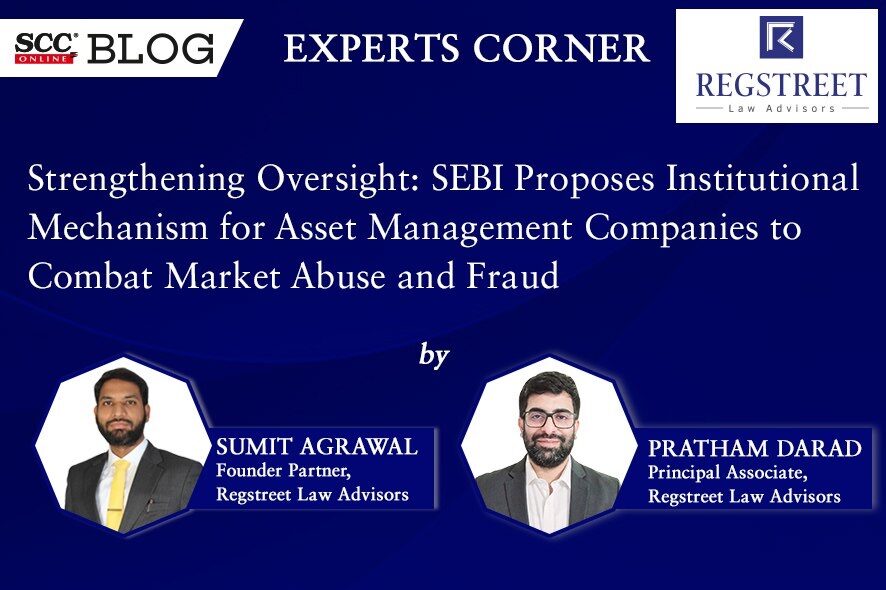Introduction
SEBI, the Securities and Exchange Board of India, has recently taken significant steps to enhance oversight and regulation within the financial market. Among these initiatives, one notable proposal aims to establish an institutional mechanism for asset management companies (AMCs) to effectively deter potential market abuse and fraudulent transactions. In this article, we delve into the reasons behind SEBI’s increased scrutiny of AMCs and explore the comprehensive measures being proposed, along with their potential implications.
The importance of oversight on AMCs
Mutual funds have become essential investment avenues in India, with the average assets under management of mutual funds totalling around INR 43 lakh crores, as reported by the Association of Mutual Funds in India (AMFI).1 AMCs play a vital role in managing these funds, entrusted by investors with the responsibility of making investment decisions that prioritise their interests.2 Given the significant influence AMCs hold over securities transactions, it becomes crucial to subject them to heightened scrutiny to maintain market integrity.
The need for a comprehensive approach
In 2017, the Committee on fair market conduct, chaired by Mr T.K. Viswanathan, submitted a comprehensive report emphasising the importance of preventing fraud and market abuse among intermediaries and fiduciaries.3 This report highlighted the necessity of establishing an institutional mechanism for effective oversight and deterrence.
Existing regulations and identified gaps
Currently, Mutual Fund Regulations prescribe a code of conduct for employees, key management personnel (KMPs), dealers, and brokers of AMCs.4 Additionally, in October 2020, SEBI directed that all executives making investment decisions for an AMC must communicate solely through recorded modes and channels during trading hours.5 The intention was to create a digital trail for potential violations. However, this directive was found to be burdensome, and it revealed the absence of a comprehensive institutional mechanism within AMCs to detect and address misconduct effectively.
SEBI’s multi-faceted approach
To address these concerns comprehensively, SEBI has proposed a multi-faceted approach in their consultation paper.6 The key proposals are as follows:
Surveillance and internal control procedures
SEBI suggests that AMCs should establish robust surveillance and internal control procedures to deter and detect misconduct. These procedures should be based on predefined parameters and thresholds derived from historical data analysis. Additionally, alerts raised should be analysed in conjunction with soft alerts, such as lifestyle checks,7 communication records, and CCTV footage. AMCs’ internal control framework should also include a well-defined policy that outlines appropriate actions in response to identified misconduct.
Reporting and escalation mechanism
SEBI proposes the implementation of a robust reporting and escalation mechanism, ensuring seamless information flow from AMCs to their Boards, Trustees, and SEBI. Regular reviews of AMCs’ policies should be conducted by the Audit Committee and the Board. Notably, SEBI is open to considering the sharing of resources, systems, and infrastructure among AMCs, subject to recommendations by AMFI and consultations with SEBI. This approach aims to strike a balance between cost considerations and safeguarding investor interests.
Whistleblower policy and individual accountability
SEBI intends to make the whistleblower policy mandatory for all AMCs, expanding its scope beyond listed entities.8 This move seeks to encourage a culture of reporting misconduct and enhancing transparency within the industry. Additionally, key managerial personnel, including the CEO, MD, and compliance officer of AMCs, would be held individually responsible if their respective AMCs fail to establish an appropriate internal control and surveillance system.
Incentives for compliance
SEBI suggests that if AMCs effectively implement an internal control and surveillance system, they may relax the requirement for all investment decision communications during trading hours to be recorded. This incentive-based approach aims to strike a balance between surveillance and operational efficiency, providing a potential incentive for AMCs to adopt robust internal controls.
Conclusion
Any change in mutual fund industry not only has far-reaching effect on the securities market but also shapes the securities market jurisprudence. For instance, the Supreme Court order in SEBI v. Shriram Mutual Fund9, holding that the penalty is attracted as soon as contravention of the statutory obligations as contemplated by the Act is established and the intention of the parties committing such violation becomes immaterial, is still relied upon by SEBI while imposing penalties.
Recent instances of SEBI investigations into cases of front running by fund managers10 and quid pro quo transactions11 have highlighted the need for enhanced surveillance of AMCs. SEBI’s proposal to establish an institutional mechanism for deterrence, detection, and reporting of market abuse and fraudulent transactions is a step in the right direction. By strengthening oversight on AMCs, SEBI aims to safeguard investor interests and maintain the integrity of the financial market. However, the success of these measures ultimately depends on the effective implementation and adherence to the proposed framework as the same shall have lasting effect on not only the AMCs but the financial sector as a whole.
† Founder Partner, Regstreet Law Advisors
†† Principal Associate, Regstreet Law Advisors
1. Association of Mutual Funds in India, Indian Mutual Fund Industry’s Average Assets Under Management (AAUM) stood ₹ at 42.95 lakh crore (INR 42.95 trillion), accessible at <https://www.amfiindia.com/indian-mutual>.
2. SEBI (Mutual Funds) Regulations, 1996, Regn. 25.
3. Report of Committee on Fair Market Conduct, dated 8-8-2018.
4. SEBI (Mutual Funds) Regulations, 1996, Fifth Schedule, Code of Conduct.
5. SEBI (Mutual Funds) Regulations, 1996, Fifth Schedule, Code of Conduct, Part B, Cl. 2(b).
6. Consultation Paper on Institutional Mechanism for Asset Management Companies for deterrence of possible market abuse and fraudulent transactions dated 20-5-2023.
7. Nishanth Vasudevan and Reena Zachariah, “A Premium Sports Car: The Smoking Gun Behind the Shakeup at Axis Mutual Fund”, The Economic Times, 12-5-2022 accessible at <https://economictimes.indiatimes.com/mf/mf-news/axis-mf-suspends-two-fund-managers-over-irregularities/articleshow/91389152.cms?utm_source=contentofinterest&utm_medium=text&utm_campaign=cppst>.
8. SEBI (Listing Obligations and Disclosure Requirements) Regulations, 2015, Regn. 18.
10. SEBI WTM interim order dated 28-2-2023 bearing reference no. WTM/SM/ISD/ISD-SEC-3/24180/2022-23, in the matter of front running of the trades of Axis Mutual Fund.)
11. SEBI Annual Report 2021-2022, p. 198.






